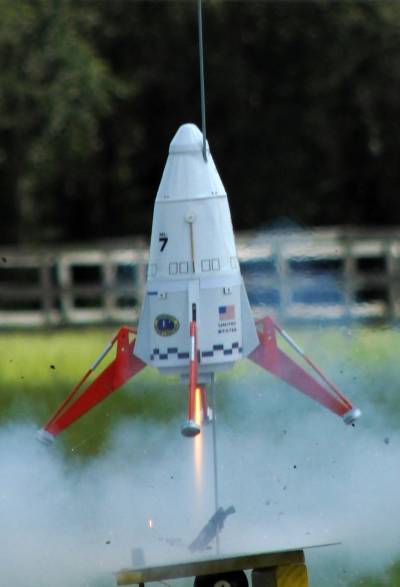Whenever I don't have much to fly at our monthly club launches, I like to drag my DSLR along with me and take pics. I've been using a Nikon D50 with the Nikkor 70-300 VR (non-DX) lens and having a lot of fun and getting pretty good shots. Yes, this camera is ancient and was one of the earlier Nikon consumer DLSR cameras but I've loved using it (I've got over 18,000 shutter clicks).
At our last launch, the D50 just wasn't focusing right and giving me some general grief so long story short, I upgraded to a Nikon D7500. Just taking shots around the house and during thanksgiving with family around let me know that this is night and day a huge upgrade. One thing I'm most excited about (which maybe seems silly given how much better this camera is) is the faster shooting rate from something like 3 pics a second (if even that) on the D50 to 8 frames a second. So I expect I'll (hopefully) get more shots with the rocket actually in the frame.
Now to the point of my thread: what tips do people have for getting good shots? Anything from general technique to specific settings for the Nikon would be appreciated.
My thoughts on camera settings are:
1. Aperture wide open to allow the fastest shutter speed possible
2. Bump the ISO up a bit to better facilitate #1 above
3. Use continuous autofocus (Nikon, and I'm assuming other brands, let you choose if the camera only focuses once when you partially depress the shutter, or continually)
4. Metering: Seems that center weighted or spot metering would be best so that a bright sky doesn't result in under-exposed rockets
What thoughts do you have if you shoot using a DSLR camera?
At our last launch, the D50 just wasn't focusing right and giving me some general grief so long story short, I upgraded to a Nikon D7500. Just taking shots around the house and during thanksgiving with family around let me know that this is night and day a huge upgrade. One thing I'm most excited about (which maybe seems silly given how much better this camera is) is the faster shooting rate from something like 3 pics a second (if even that) on the D50 to 8 frames a second. So I expect I'll (hopefully) get more shots with the rocket actually in the frame.
Now to the point of my thread: what tips do people have for getting good shots? Anything from general technique to specific settings for the Nikon would be appreciated.
My thoughts on camera settings are:
1. Aperture wide open to allow the fastest shutter speed possible
2. Bump the ISO up a bit to better facilitate #1 above
3. Use continuous autofocus (Nikon, and I'm assuming other brands, let you choose if the camera only focuses once when you partially depress the shutter, or continually)
4. Metering: Seems that center weighted or spot metering would be best so that a bright sky doesn't result in under-exposed rockets
What thoughts do you have if you shoot using a DSLR camera?






